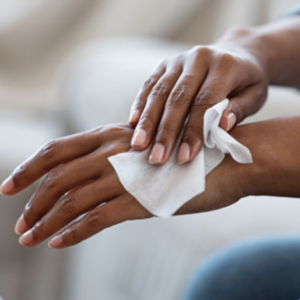Interventional Care


We notice that you are visiting us from . This site only services US-based visitors. Would you like to visit the site that is appropriate for your location?

Infection prevention and control (IPC) efforts in the acute care setting have proven imperative to patient safety initiatives and good patient outcomes. The IPC focus in healthcare is to help prevent healthcare-associated infections (HAI) and halt disease transmission; at the community level, many of these practices have and continue to be public health teachings, especially given the onset of the COVID-19 pandemic.
Unfortunately, these practices do not always seamlessly transition to the primary care setting, and while many of the IPC guidance applies to primary care, sorting through the various World Health Organization (WHO) resources for setting pertinent content can be cumbersome. The WHO recently highlighted relevant content in the recent publication “Strengthening infection prevention and control in primary care: A collection of standards, measurements and implementation resources”1.
The target audience is IPC practitioners, policymakers, senior managers, and others involved with program development and strengthening in the primary care setting. The WHO document consists of two parts:
As expressed in the WHO document and important to note, IPC work does not stop with those listed above and needs to be the responsibility of all healthcare workers (HCW).
This segues us to the minimum core components for an IPC program in the primary care setting: guidelines, education and training, surveillance, multi-modal strategies, monitoring and feedback, workload staffing and bed occupancy, the built environment, materials, and equipment.
Part A addresses IPC in primary care and the outpatient setting from a global perspective, being mindful of resource variations within and across different countries and healthcare settings. The minimum IPC requirements are nicely outlined for each core component including who is responsible for the action, how to measure progress, why the rationale exists, and reference to additional tools and resources.
Part B focuses on general implementation principles and multi-modal improvement strategy (MMIS), hand hygiene and primary care, and resource considerations for investing in hand hygiene improvement in health care facilities1. MMIS provides the roadmap for system change to support IPC progress and measurable benefits for patients and HCWs. Hand hygiene is a priority focus of resource allocation and education within the IPC program in primary care. And rightfully so, as hand hygiene is a foundation of infection prevention. The WHO highlights their model for hand hygiene encompassed in the “My five moments for hand hygiene”2 which includes:
Hand hygiene in the outpatient setting- especially in terms of the patient zone- varies a bit from the inpatient setting and this is nicely highlighted as a special consideration, complete with educational posters for the various outpatient care scenarios.
Bringing IPC to the forefront of the primary care setting is no small task- and certainly, resource disparities across the globe create barriers to successful implementation. The WHO resource provides a comprehensive guide to building an IPC program across various outpatient care settings from preparing for action to maintaining sustainability amidst competing priorities, celebrating IPC wins, and creating growth plans. The WHO addresses the IPC implementation process as a continual performance improvement project, which is the cornerstone of infection prevention and patient safety.
PDI provides a full portfolio of infection prevention products, including hand hygiene products that are applicable to all healthcare settings, as well as educational materials for product use- to include staff, patients, and visitors, and mounts and stands for easy access to support compliance. PDI products and educational resources serve to support IPC initiatives around hand hygiene from initial system change (Build it), to training and education (Teach it), reminders and communications (Sell it), and ultimately the safety climate and culture change (Live it)1.
Citation:
1 Strengthening infection prevention and control in primary care: a collection of existing standards, measurement and implementation resources. Geneva: World Health Organization; 2021. (https://www.who.int/publications/i/item/9789240035249)
2. https://www.who.int/gpsc/5may/Your_5_Moments_For_Hand_Hygiene_Poster.pdf Accessed 10/7/2021